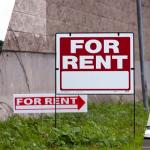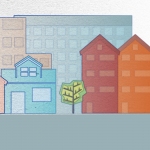A Guide to Proactive Rental Inspections
Imagine you are a housing official working in local government who wants to reduce in-home health hazards for renters. Perhaps your jurisdiction has issues with asthma exposure from mold or pests or with lead poisoning from flaking paint. What housing code enforcement options can help you keep people safe from harm? What unintended consequences could arise from those policy decisions?
For millions of people living in substandard rental housing, health hazards are all too familiar. As of 2018, more than 45 million, or 45% of homes in the United States had one or more health or safety hazards; and US residents experience more than 12 million home-related injuries each year. Housing quality and stability is a powerful predictor of children’s’ well-being and academic performance. Yet renters who might report in-home hazards to property owners or local housing authorities experience many obstacles, including fear of eviction and retaliation by landlords; fear of deportation (for undocumented renters); language barriers; and general distrust of government.
Proactive rental inspection (PRI) programs are one way to alleviate housing quality issues. Unlike complaint-based rental inspection programs, PRI programs perform inspections on a regular schedule, reducing the likelihood that renters will be evicted or illegally punished for reporting hazards. PRI programs can work cooperatively with building owners to improve housing quality and preserve the existing stock of affordable housing by preventing buildings from deteriorating to the point where they can no longer be inhabited or where teardown and replacement of the building makes more economic sense. Proactively inspecting rental housing to enforce housing codes helps localities keep people in their homes and protect tenant health and well-being. PRI programs can also be designed to minimize inequities that might arise from enforcement actions.
A Guide to Proactive Rental Inspections is intended for housing advocates and local government officials who seek to advance health and equity through policies that improve housing quality and affordability. This guide provides an overview of considerations in designing, implementing, and improving a PRI program, covering the following topics:
- Effective community engagement as a key to a successful PRI program
- Benefits of PRI programs
- Selection of properties for inspection
- Program rollout
- Property inspections
- Equitable enforcement for PRI
- Data management



